|
|

|
|
Specifications:
C3 Bookshelf Mini-Monitor:
• Two-Way
Reflex
• One 1" Aluminum Dome Tweeter, One 6 1/2" Rubberized Woofer
• MFR: 46 Hz - 23 kHz ± 3 dB
• Nominal Impedance: 8 Ohms
• Sensitivity: 92 dB/W/M
• Size: 15 1/2" H x 7 3/4" W x 11 1/2" D
• Weight: 15 Pounds Each
• MSRP: $500/Pair - Maple or Black Ash
C-C1
Center Channel:
• Two-Way
Reflex
• One 1" Aluminum Dome Tweeter, Two 5 1/2" Rubberized Woofers
• MFR: 50 Hz - 23 kHz ± 3 dB
• Nominal Impedance: 8 Ohms
• Sensitivity: 90 dB/W/M
• Size: 6 1/2" H x 22 3/4" W x 9 3/4" D
• Weight: 16 Pounds Each
• MSRP: $350 each - Maple or Black Ash
C-R1 Rear
Channel Surrounds:
• Bipolar
• Two 1" Aluminum Dome Tweeters, One 5 1/2" Rubberized Woofer
• MFR: 80 Hz - 23 kHz ± 3 dB
• Nominal Impedance: 8 Ohms
• Sensitivity: 92 dB/W/M
• Size: 7" H x 12 1/2" W x 5 3/4" D
• Weight: 4 Pounds Each
• MSRP: $175 Each - Black Crackle Finish
S10.2
Powered Subwoofer:
• Ported
• One 10" Driver
• 150 Watt Amplifier
• MFR: 23 Hz - 100 Hz ± 3 dB
• Variable Low-Pass 50 Hz - 100 Hz
• Size: 15 3/4" H x 15 3/4" W x 17 1/2" D
• Weight: 33 Pounds Each
• MSRP: $500 Each - Black Ash
Energy Speakers
http://www.energy-speakers.com
|
|
Introduction
With the Christmas season coming up, the market segment for moderately
priced home theater loudspeakers is sure to be hot. But is it possible to
buy a budget home theater speaker package without a great compromise in
audio performance? Canadian manufacturer Energy Speaker Systems tries to do
just this with their Connoisseur series of speakers.
The center of this package is the C3 stand mounted bookshelf speaker, in
combination with the matching C-C1 center channel, and the small, bipolar
C-R1 rear channel speaker. The S10.2 subwoofer is not technically a part of
the Connoisseur series, but is a good match in terms of both cost and size.
I tested these speakers as a complete home theater system, and also tested
the C3 speakers alone in a two-channel audio system.
Energy Speaker Systems is part of Audio Products International Corporation
which designs and manufactures three brands: Energy Speaker Systems, Mirage
Loudspeakers, and Athena Technologies. API has existed for over 25 years and
specializes in moderately priced (for the High End anyway) loudspeakers. The
Veritas line (one of the Energy lines) is very well regarded, and the
Connoisseur line attempts to bring as much of the Veritas performance level
to a lower price point.
Energy's three main design points of flat, wide bandwidth, on-axis frequency
response, wide and constant dispersion, and low distortion and resonance are
difficult design goals to achieve with a restricted budget. The Connoisseur
speakers use a hard-dome tweeter with a smooth, flared fascia and a low
resonance frequency that allows a lower crossover frequency (2 kHz),
improving the performance of the woofers.
The woofers themselves use a very novel design. The woofer baskets are an
integral part of the front panel of the speaker cabinets. The woofer baskets
are molded directly into the plastic front panel. The driver cones and
concave dust caps are made of the same polymer compound used for the much
more expensive Veritas speakers.
Cabinets are braced MDF with laminate vinyl veneer finish; mine were the
ubiquitous black ash. The C-R1 rears have a crackle black (also a vinyl
laminate) finish. All speakers except the rears are magnetically shielded,
and have convenient and clever magnetically attached grilles. Binding posts
are very well made and solid, and do not allow the use of a wrench to
tighten them, which eliminates the possibility of over tightening. They do
allow the use of banana plugs.
Quality and Construction
When I received the Connoisseurs, I was very impressed with the construction
quality, given their cost. The C3s felt very solid and heavy, with well done
cabinetry. While the front panel of the speaker is plastic, the look and fit
of the panel is good, as is the binding post cup.
Simple rubber feet stick on with adhesive. The magnetic grilles are clever,
but I chose to leave them in the box for auditioning. Overall, the solidity
and fit and finish of the speakers were a big step up from my B&W CC3 and
DM302 speakers. Compared to my Platinum Audio Solo reference speakers, the
Energy cabinets were much less solid, and the quality of the materials were
just not in the same league. Bare in mind that one pair of Solos cost more
when they were available than the entire Energy system.
The construction of the center channel is almost identical to the C3, with a
plastic front panel and integrated woofer baskets. The rears seem even
better constructed than the others. The cabinets appear to be made of the
same thickness MDF as the others, but the small cabinet size makes them seem
very, very solid. The gold plated brass binding posts are of high quality,
and even the plastic rear panel with the integrated wall mount is made of a
very tough, solid plastic. The one-piece grille covers three of the four
sides of the speaker with metal pin connections to the cabinet.
I was less impressed with the construction quality of the S10.2 subwoofer.
The rear panel was made from relatively inexpensive-looking and feeling
plastic, with lower quality connectors than the other speakers. Front panel
controls also did not meet the same level of quality of the Connoisseur
speakers. While some of the materials were obviously chosen to keep cost
down, the quality of construction of all these speakers was top notch, with
the exception of the subwoofer. However, it is the norm for a $500
subwoofer. I have to complain about something, I guess.
Home Theater Performance
The primary application of this loudspeaker set is music rather than home
theater, but I found them to do a very admirable job with movies, just the
same. I was particularly impressed with the dialog intelligibility of the
center channel speaker. The hard dome aluminum tweeter can at times sound a
little coarse and sharp, but that also seems to help with dialog. The bass
and midrange produced full sounding male voices and music.
With the center
set to "Large" on my Rotel RTC-965, the center also did not lack for impact
with sound effects. Sibilants could sound a little harsh, but the effects of
AC-3 compression on Dolby Digital compressed soundtracks were worse than the
character added by the tweeter. It was a huge step up from the B&W CC3 in
every way imaginable. Compared to my new Platinum Audio Solo center channel
(which are essentially impossible to find, since they were special-order
only when new), the C-C1 was more coarse and rough in both the treble and
midrange, and did not go anywhere near as low. The treble characteristics of
the C-C1 did allow me to listen at lower volume levels and still get very
good dialog performance. The fact that the C-C1 did not embarrass itself
compared to a center channel with a MSRP three times higher was a nice
surprise.
The bipolar rears performed well, without ever calling undue attention to
themselves. Using B&W DM302s as rears can sometimes result in sound that is
too directional, making surround cues sound unnatural. The built in wall
mounts made for easy mounting high on the wall on either side of my couch.
Since a lot of rear surround performance is due to correct positioning, the
built-in mounts will encourage owners to put them in the proper place.
The C3 left and right speakers got most of their workout with home theater
material during big, exciting moments in movies, and then never
disappointed. During orchestral crescendos, the C3s were able to throw a
huge sound field with impressive results. Their bass performance was good
enough to allow the subwoofer crossover to be set low in frequency, putting
as much of the bass as possible in the full range speakers. Transients were
handled especially well by the C3 tweeters, really adding to spatial cues.
Sometimes, sounds seemed to come from outside the room.
The S10.2 subwoofer offers plenty of power for solid sound effects like
explosions. It was very insensitive to positioning when the crossover was
set low enough. At first, the sub exhibited a very different timbre than the
C3 and C-C1, which was distracting at times. It turned out that this effect
was caused by setting the crossover much too high. I have a room node, newly
found, at about 65 Hz, right at the crossover point between the sub and the
C3s. Not knowing about the node, I set the crossover of the sub much too
high in frequency to try and compensate for the null. This caused the bass
to sound boomy and ill-defined, with a strange timbre. Lowering the
crossover to around 60 Hz removed all traces of this effect, although it was
difficult to get the crossover point and level just right because of my
room's characteristics at the crossover frequency. I doubt that all of you
have exactly the same size and shape room as me, so this should not be a
common problem.
Still, it is important to note that setting up a sub is not
a trivial matter, and it is very easy to be fooled by standing waves in your
room. When in doubt, use as low a crossover frequency as you can get away
with, and listen to test tones without the sub to identify any nulls. The
sub also has an auto-on feature that turns on the subwoofer when a signal is
detected. Unfortunately, the threshold for this circuit was relatively high
in the review unit, which caused the speaker to turn itself on and off too
often. I suspect this was just a peculiarity of the review unit, as it had
been shipped all over the US for the various tests we performed. Energy has
used this same circuit for 10 years in their subs without any trouble. The
turn-on threshold is a low 24 mV. If one of the resistors in this circuit is
out of spec or knocked loose, the auto-on circuit will not work properly.
According to Energy this is a very rare failure, but has happened before.
While I would prefer the sub simply have a power switch and be on all the
time, I expect that a properly operating auto-on circuit will be great for
the vast majority of customers. After proper setup, the S10.2 offered
extensive power and extension to all but the very lowest pant-flapping
frequencies in my fairly small room, with fairly good speed and agility. It
bested my REL sub in the power and slam department, but did not have the
same speed, agility or finesse. Also, the REL sub integrates so well with my
Solos that it is very difficult to tell it is even on. I do think that if I
wanted the sub just for Home Theater, I might very well prefer the Energy
sub, especially since it's three times cheaper. For music, the nod goes to
the REL as expected; that's what it was designed for.
It would be nice if the C3 speakers went lower in frequency. Using test
tones, I was able to get flat response to 60 Hz in my room, with reasonable
output down to about 45 Hz. The sub also had a ?home theater? mode that
boosts bass for movies, but I'm allergic to stuff like that. I set the level
and crossover to be as natural as possible using test tones and listening,
and then I left it alone. There is also a crossover for satellite speakers
and a facility for speaker level inputs, but I did not use this feature
either.
Two-Channel Audio Performance
I set up the C3s on my Platinum Audio stands in the same position where my
Solos normally reside. As the C3 is a fairly similar speaker in size and
frequency performance, they worked very well in this position. The rigidity
of the lead and sand filled stands undoubtedly helped as well. For anyone
who wants to get the best out of a bookshelf speaker, good, rigid, fillable
stands loaded with at least sand and preferably lead shot and sand, are
vital. All Energy speakers are extensively broken in at the factory, so I
noticed very little change in the speakers as I lived with them. The first
pair of C3s I was sent did have a problem with one of the woofer drivers.
Something was askew that caused the woofer to buzz with any music containing
low frequency content. This was also present in home theater, but could be
removed by setting the left and right speakers to ?small.? Replacements were
sent from Energy that had no problems, and also sounded very similar to the
first pair in the midrange and treble. This damage was probably caused in
shipping. The packaging of the C3s could be better, with only Styrofoam
corner blocks for the speakers to cushion them.
From the beginning, it was clear these speakers were soundstaging champs. I
can't think of any speakers costing less than $1,000 that were able to
present such a large, deep, decoupled soundstage. While they did not image
very much outside the speakers, images floated in space with very little
relation to the boxes on the stands. Center images were especially tight and
stable. The depth performance was very surprising. It usually takes spending
some serious cash to get speakers that can reliably reproduce soundstage
depth, but the C3 did it with aplomb. There was just a hint of the images
clustering around right, center and left, but the C3 was far better than
most low priced speakers I've heard. The character of the tweeter led to
very good transient imaging. The only negative was some confusion between
closely spaced images that made them difficult to separate at times.
The tonal characteristics of the C3s were good, but not up to their
soundstaging abilities. The treble was coarse compared to the Solos,
especially noticeable on sibilants. I never heard anything I would call
bright, but the lack of smoothness did call attention to the treble. The
midrange also exhibited some coarseness and could add an artificial sound to
vocals and stringed instruments. Both these problems were not really that
bad, however. It was only in comparison to a much more expensive speaker,
the Platinum Audio Solo, that I noticed them. Compared to speakers more in
line with the C3s price, the treble performance was very good with very
little, if any, tendency towards brightness. The midrange had very little
coloration, with the smoothness problem only just peeking out at times.
The only really obvious deficiency of the C3 was some midbass bloat.
Probably coupled to some sort of cabinet or port resonance, the midbass
region could sound both emphasized and boomy. The slight midrange coarseness
and the midbass bloat combined to compromise imaging, causing images to
become confused when multiple instruments were located near each other in
the soundstage. This midbass problem was the most intrusive, but was only
really noticeable for me with acoustic instruments that had significant bass
energy. Acoustic bass and the lower registers of the guitar were the biggest
problem. With electronically amplified instruments and drums, the midbass
seemed to be less noticeable. Lower down, the C3 offered admirable bass
performance, with no rolloff to 60 Hz, and decent performance all the way to
45 Hz. Acoustic bass never sounded lacking, although the C3 could not
deliver the weight and slam of the Solo/Strata II combination. The Solo is
known for having exceptional bass performance for a mini-monitor, and the C3
could get fairly close in extension, if not in power. All this might sound
negative, but I'm really just setting a high bar for the C3s. I have never
heard a speaker that combines the very low $500 MSRP of the C3 with the
exceptional imaging performance, nearly coloration free midrange and very
satisfying bass performance.
On the Bench (JEJ)
Click on the thumbnail photos
below to see the full size versions with a description of the data.
|
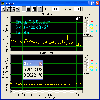 |
 |
 |
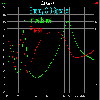 |
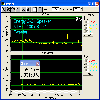 |
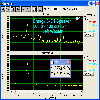 |
|
Energy C-3, 5
kHz, 100 dB |
Energy C-3, 50
Hz, 100 dB |
Energy C-3,
Frequency Response |
Energy C-3,
Impedance & Phase |
Energy C-C1, 5
kHz, 100 dB |
Energy C-C1, 50
Hz, 100 dB |
| |
|
|
|
|
|
|
 |
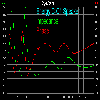 |
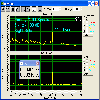 |
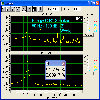 |
 |
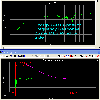 |
|
Energy C-C1,
Frequency Response |
Energy C-C1,
Impedance & Phase |
Energy C-R1, 5
kHz, 100 dB |
Energy C-R1, 50
Hz, 100 dB |
Energy C-R1,
Frequency Response, Front |
Energy C-R1,
Frequency Response, Side |
| |
|
|
|
|
|
|
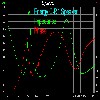 |
 |
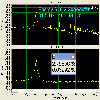 |
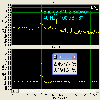 |
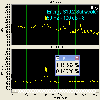 |
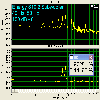 |
|
Energy C-R1,
Impedance & Phase |
Energy 10.2
Sub, 25 Hz, 100 dB |
Energy 10.2
Sub, 31.5 Hz, 100 dB |
Energy 10.2
Sub, 40 Hz, 100 dB |
Energy 10.2
Sub, 50 Hz, 100 dB |
Energy 10.2
Sub, 40 Hz, 50 Hz IM |
| |
|
|
|
|
|
|
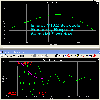 |
|
|
|
|
|
|
Energy 10.2 Sub, Frequency Response |
|
|
|
|
|
|
|
|
|
|
|
|
Conclusions
I would not hesitate to
recommend the Connoisseur speakers from Energy to anyone in the market for a
moderately priced home theater loudspeaker setup. The center channel was
very impressive for dialog, and offered good sound effects performance. The
C-R1 rears are convenient, well made, low priced, and the bipolar sound does
the job without ever calling attention to themselves. The C3s, while great
in a home theater setting, really shine when used alone for music. They
would be my recommendation for a sub-$1,000 speaker for anyone who valued
imaging and soundstaging, and was willing to give up some bass output. While
I missed my Solos, I never felt I was really being short-changed by the C3s.
The S10.2 sub is a fine value for a powerful home theater subwoofer. While
for music I would recommend using the C3s alone, the sub offers lots of
slam, power and extension for not very much money.
Associated Equipment:
Audio
• Platinum Audio Solo
loudspeakers
• REL Strata II subwoofer
• Plinius 8150 integrated amplifier
• Bel Canto DAC-1.1 DAC
• Pioneer DV-435 DVD player (transport)
• Linn LP-12 Valhalla turntable
• Linn Ittok LVII tonearm
• Grado Reference Platinum MM cartridge
• Lehmann Black Cube phono stage
• Nordost Blue Heaven interconnect
• Nordost Red Dawn speaker cable
• DIY AC power cables
• Audio Power Power Wedge AC conditioners
Home Theater
• B&W CC3 center channel
loudspeaker
• Platinum Audio Solo center channel loudspeaker
• B&W DM302 rear channel loudspeakers
• Rotel RTC-965 surround sound processor
• Acurus A100x3 3 channel amplifier
• Panasonic RP-56 DVD player
• Sony SAT-T60 Directv receiver/TiVo
• Samsung TSK-3292F display
• Tributaries Delta component video cable
• Tributaries Delta S-video cable
• Straight Wire RCA interconnect
- Chris Groppi -
Terms and Conditions of Use

|























